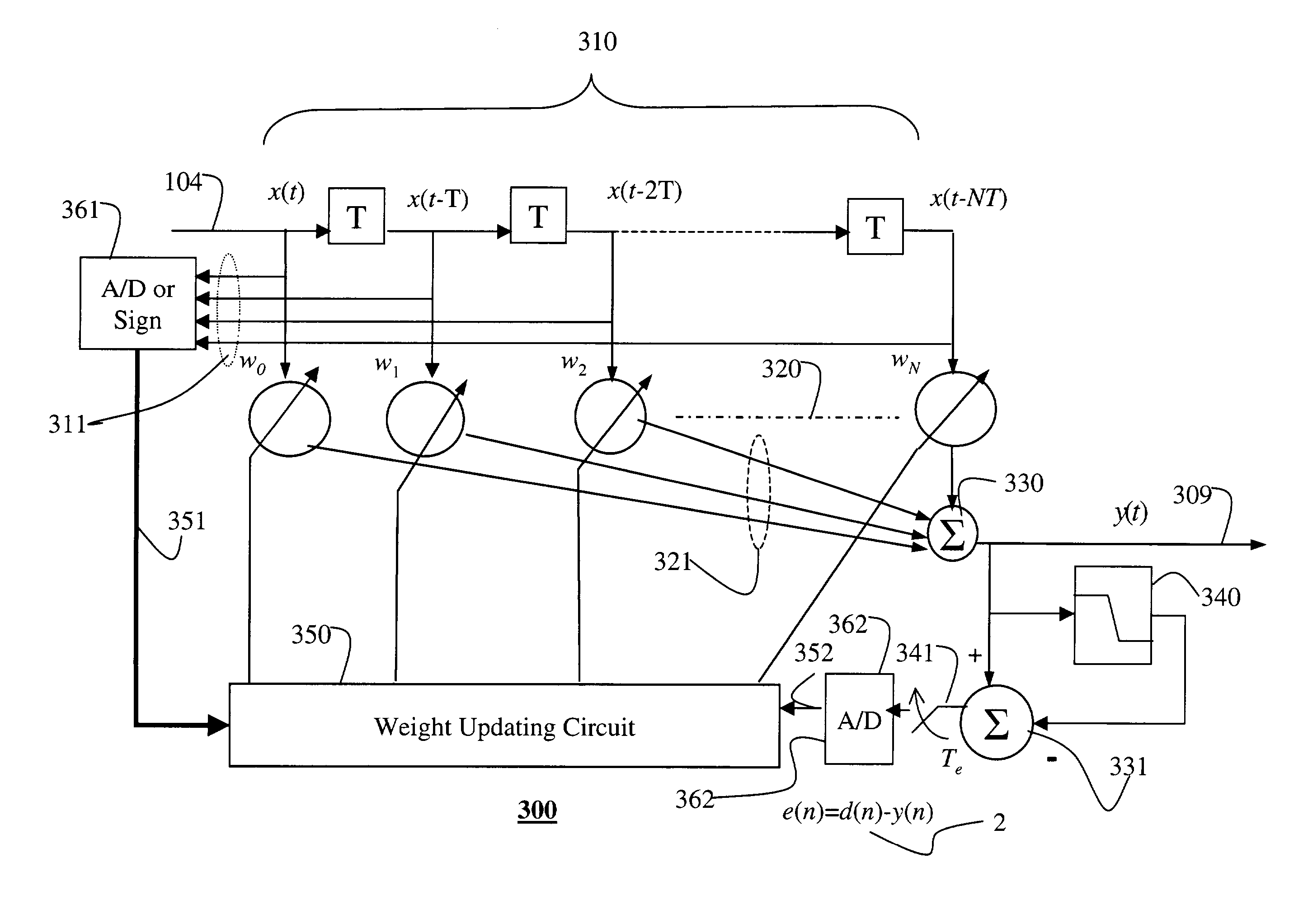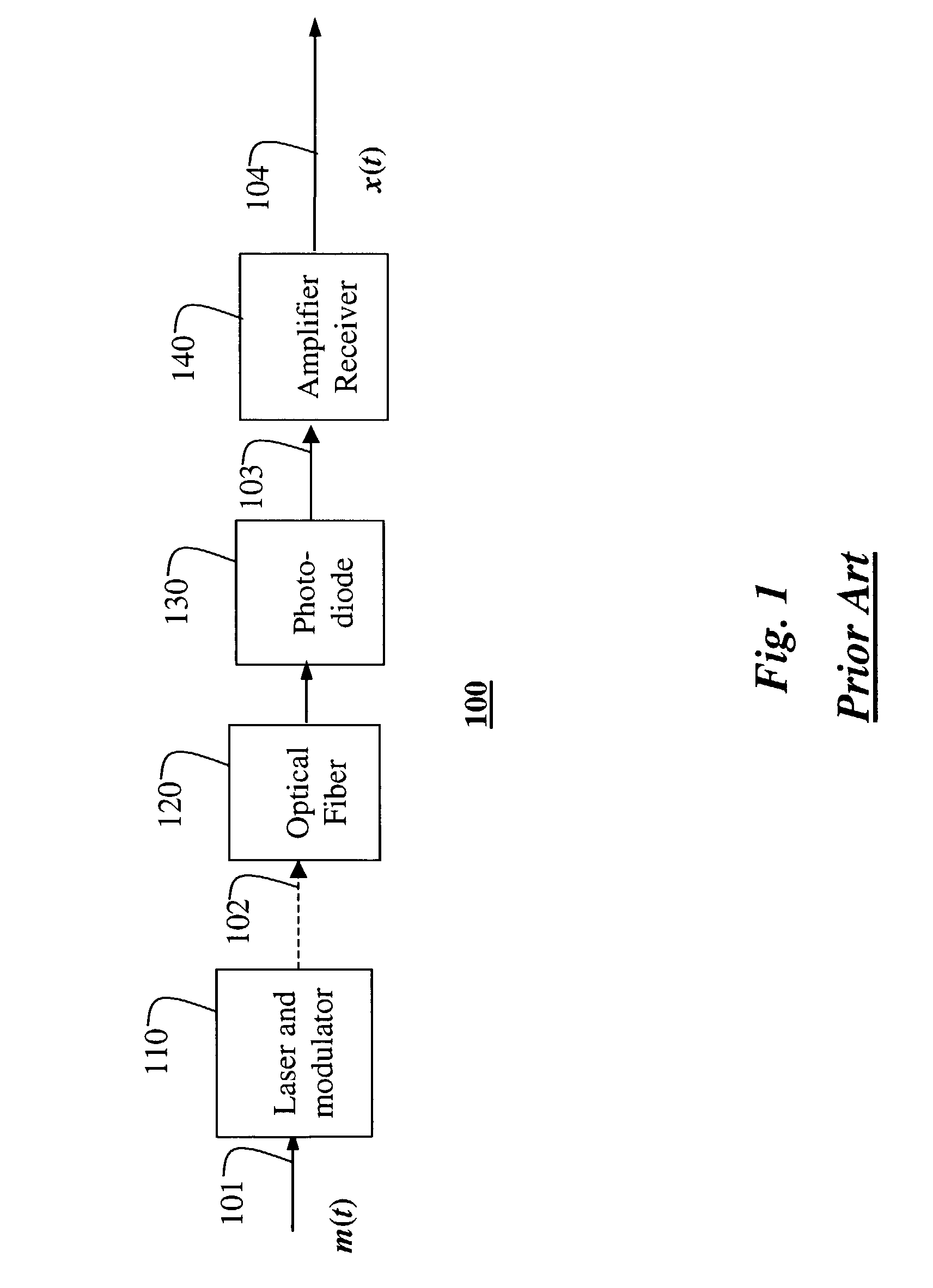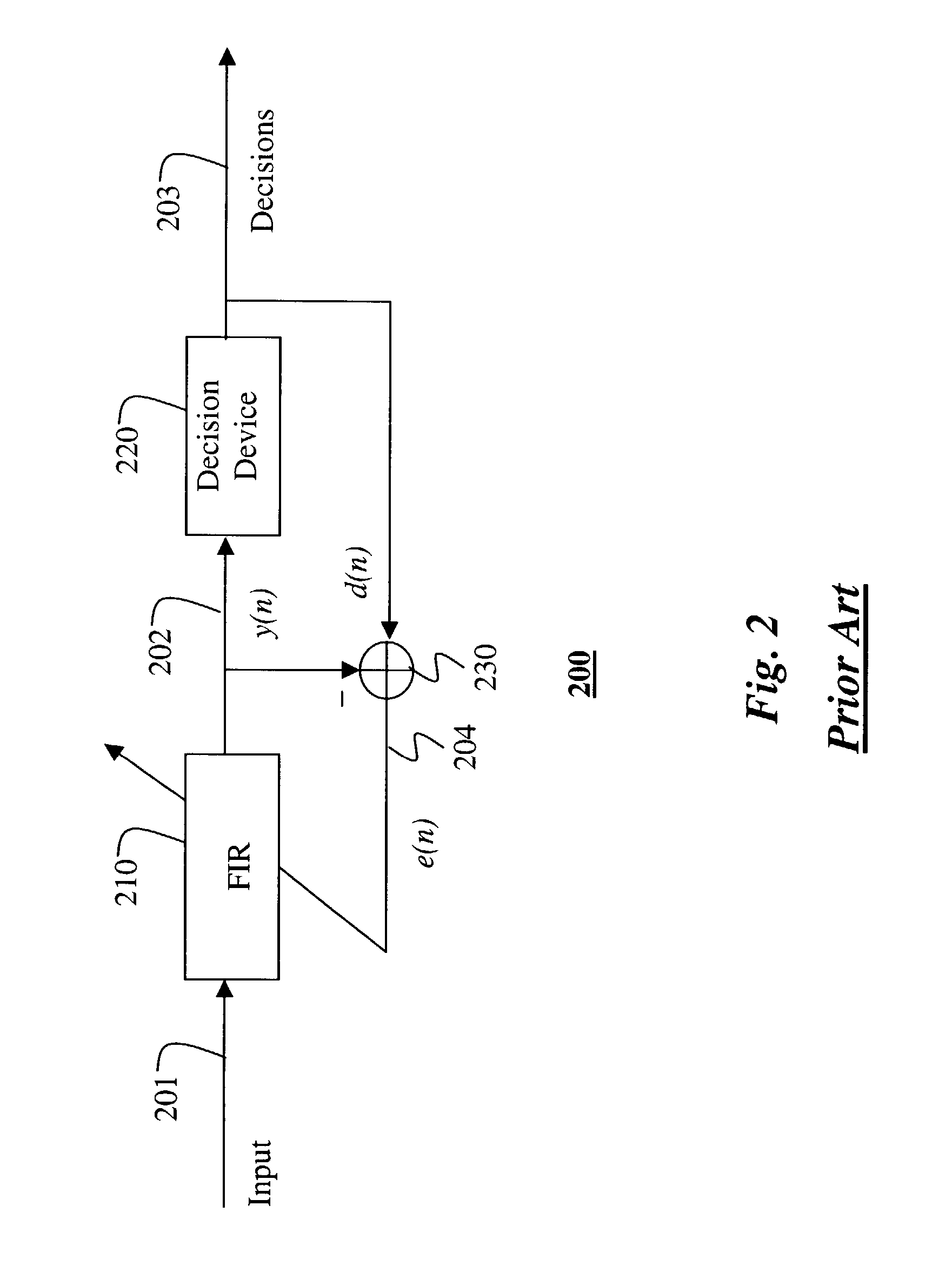Hybrid adaptive equalizer for optical communications systems
a technology of optical communication system and equalizer, applied in the field of optical communication system equalization of signals received via, can solve the problems of peak distortion error, high analog-to-digital converter and very fast digital equalizer, inter-symbol interference, etc., and achieve the effect of reducing inter-symbol interferen
- Summary
- Abstract
- Description
- Claims
- Application Information
AI Technical Summary
Benefits of technology
Problems solved by technology
Method used
Image
Examples
Embodiment Construction
System Structure
[0022]FIG. 3 shows a hybrid adaptive equalizer 300 according to the invention that includes both analog and digital components. The analog components of the equalizer 300 includes of a series of N analog tapped delay elements 310, a set of N+1 analog multipliers 320, two analog adders 330–331, and an analog decision device 340, e.g. a comparator. These analog components implement an analog tapped delay line filter.
[0023]The digital components include a weight updating circuit 350 used to adjust the weights w of the set of tap. The weights can be adjusted according to the least mean-square (LMS) error, a signed LMS error, or a recursive least-squares error, see Proakis, Digital Communications, Fourth Edition, McGraw-Hill, New York, 2001 for other variations. Inputs to the weight updating circuit 350 pass through analog-to-digital (A / D) converters 361–362.
System Operation
[0024]The input to the hybrid adaptive equalizer is the received signal x(t) 104 shown in FIG. 1, s...
PUM
 Login to View More
Login to View More Abstract
Description
Claims
Application Information
 Login to View More
Login to View More - R&D
- Intellectual Property
- Life Sciences
- Materials
- Tech Scout
- Unparalleled Data Quality
- Higher Quality Content
- 60% Fewer Hallucinations
Browse by: Latest US Patents, China's latest patents, Technical Efficacy Thesaurus, Application Domain, Technology Topic, Popular Technical Reports.
© 2025 PatSnap. All rights reserved.Legal|Privacy policy|Modern Slavery Act Transparency Statement|Sitemap|About US| Contact US: help@patsnap.com



